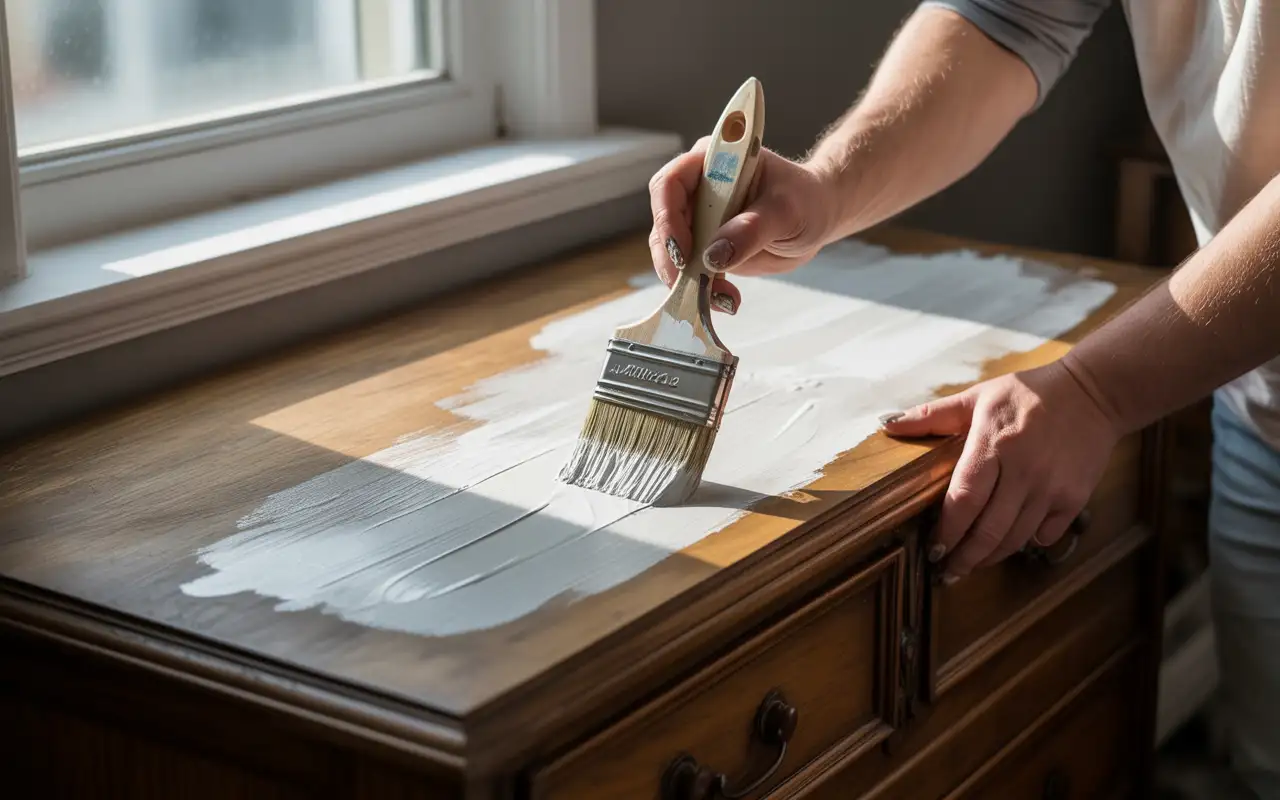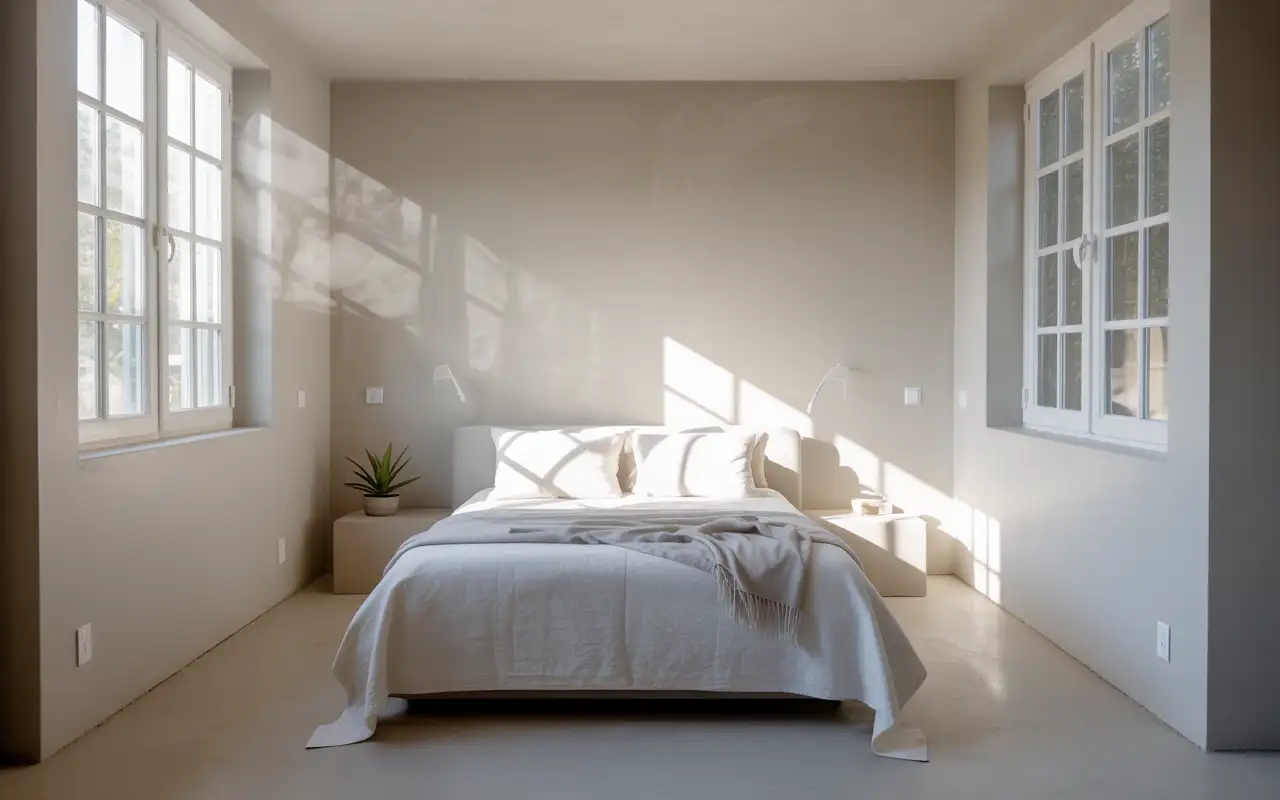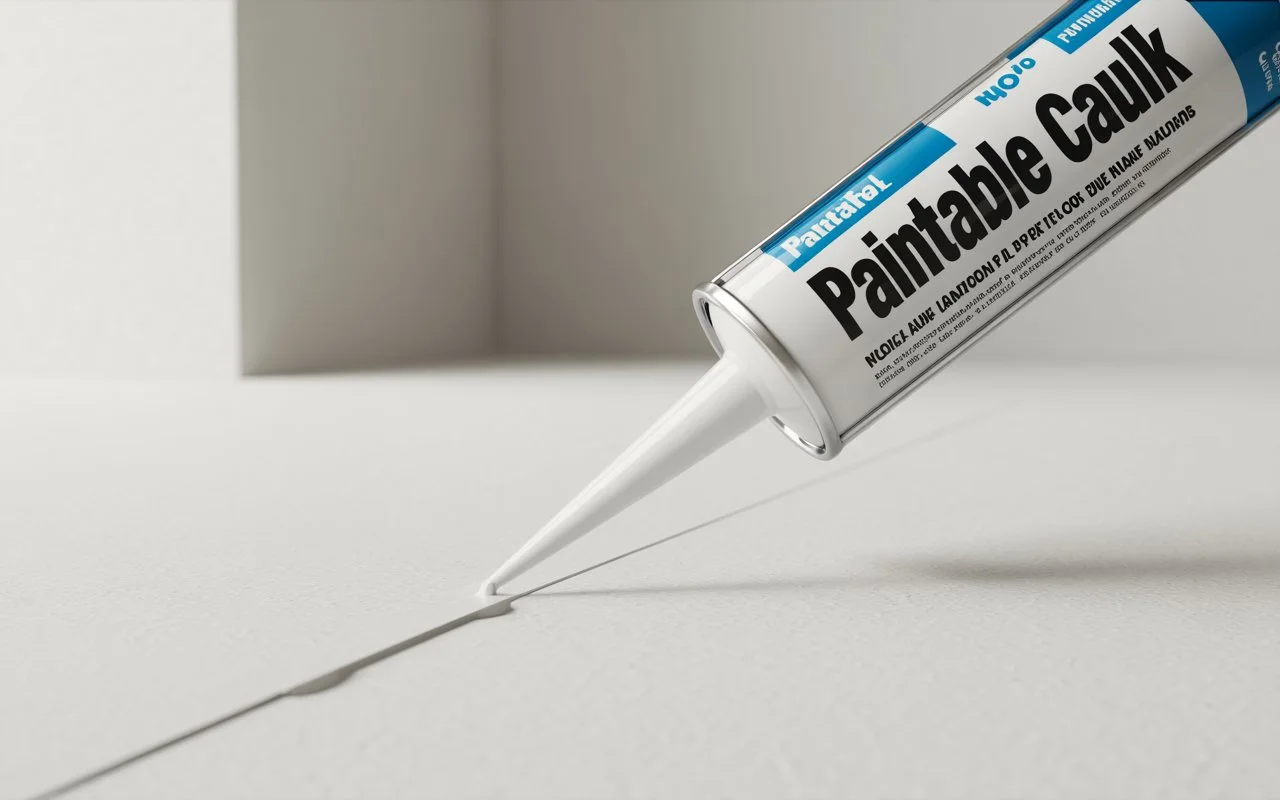Dated, dark, or worn wooden paneling can close in a space and make it feel old. But that does not mean you have to live with that wood! Painting your dark wood paneling is actually an inexpensive way to brighten a space up and give it a fresh, modern feel once again. The following guide will go into detail on how to paint wood paneling and give it a beautiful, professional finish that will last you a long time to come.
Table of Contents
To Paint or Not to Paint?
Before you start, it’s good to think about if painting is the right choice for your walls. Painting wood paneling is a big step, so consider these pros and cons.
Pros:
- Instantly modernizes a room. A fresh coat of paint can make a space feel brand new.
- Brightens and makes small spaces feel larger. Lighter paint colors reflect light and open up a room.
- Covers up damage or outdated finishes. You can hide old stains, scratches, or a color you no longer like.
- Cost-effective alternative to replacement. Tearing out and replacing paneling is expensive and time-consuming. Painting is a much cheaper fix.
Cons:
- Permanently covers the natural wood grain. Once you paint, you can’t easily get the natural wood look back.
- Requires significant preparation. Rushing the prep work can lead to peeling and bubbling paint later on.
- Can be a time-consuming project. This isn’t a quick job. It takes careful steps to get a good result.
What You’ll Need

Getting your supplies ready before you start will make the job much easier. Here’s a checklist of everything you’ll need.
Preparation Supplies:
- Wood filler or spackle
- Caulk
- Painter’s tape
- Drop cloths
- A degreasing cleaner (like TSP)
- Buckets and sponges
- Gloves and safety glasses
Sanding Tools:
- Medium-grit sanding sponge or sandpaper (around 120-150 grit)
- Fine-grit sanding sponge or sandpaper (around 220 grit)
- Vacuum with a brush attachment
- Tack cloths
Priming and Painting Supplies:
- High-quality oil-based primer or a shellac-based primer for knotty wood
- Good quality paint brushes (an angled sash brush is a must)
- Paint rollers with an appropriate nap
- A paint tray
- Your chosen latex paint or oil-based paint
Optional but Recommended:
- A pole extension for your paint roller
- A small detail brush for tight spaces
A Guide to Painting Wood Paneling

The secret to a great finish is following these steps carefully. Don’t skip a single one, especially the preparation.
Step 1: Inspect the Wood Paneling
First, check out the walls closely. Check for any grease, dirt or damage. To gauge the existing finish, check to see if it is glossy. Are there areas that are peeling? Are there knots in the wood that would bleed through? This inspection will inform what tools are needed for the job. Recognizing issues during inspection will save time later on.
Step 2: Clean the Wood Paneling
Cleaning the surface is one of the most critical steps. All residues, such as dirt, grease, and dust, must be removed; otherwise, the paint will not adhere properly. A degreasing cleaner such as TSP, or a mixture of soap and water, will do the trick. Use a sponge to wash the walls and work in sections, rinsing the sponge in clean water as required. Then, take a sponge and some clean water to rinse away any residue of soap. Allow the paneling to fully dry. A clean surface is prepared for good adhesion of paint.
Step 3: Prime Your Wood Paneling
This is a trick a lot of pros do. Before priming the whole wall, you “spot prime” any problem areas. This means you’ll just put on a coat of a strong stain-blocking primer over any knots or dark stains. This will ensure that stains will not bleed through your final coats of paint. This is particularly important for older wood paneling that may have stains you cannot see.
Step 4: Spackle and Caulk the Paneling
Now it’s time to address any small problems. Use a small amount of wood filler or spackle to fill in any nail holes, scratches, or dents. For gaps between the panels or between the paneling and the trim, a bead of caulk is best. This creates a seamless look and keeps out moisture. Let the filler and caulk dry completely before proceeding.
Step 5: Sanding, Vacuum, and Tack for Smooth Paneling
Sanding is critical. The purpose is to create a slightly rough surface for the primer to grab onto. To sand the entire surface, use a medium-grit sanding sponge and lightly sand. You don’t need to sand bare wood, just enough to scuff it up and especially pay attention to any glossy surfaces. Vacuum all the dust after sanding with a brush attachment. Then, wipe the walls with a tack cloth. The tack cloth will pick up any fine dust left on the surface, giving you a perfectly clean and smooth surface.
Step 6: Prime Your Wood Paneling Again
This is the most important step of the entire process, and do not skip it! You want to apply a full, even coat of primer to the whole surface. For the best results, I suggest using a good, high-quality oil-based primer. It will seal the wood, block any stains, and provide a perfect surface for any topcoat to stick to. This is the base for your new paint job. The overall look and longevity of your finished product are highly influenced by a good primer for wood paneling, and it will show. Use a brush for the grooves and a flat nap roller for flat surfaces.
Step 7: Paint the Wood Paneling
Now it’s time to paint. First, use a good brush to “cut in” around the edges, corners, and grooves of the paneling. This is called painting paneling. Next, now you’re ready to apply paint with the paint roller to the larger flat areas. Make sure you are using a thin, even paint coat. Two thin coats of paint are always better than one thick coat of paint. When possible, paint with the grain of the wood to preserve the natural appearance of the panels. This technique is the key to successfully painting paneling walls.
Step 8: Apply a Second Coat to Your Painted Paneling
A second coat is typically recommended to achieve the best color and durability. If applying a second coat, make sure to let the first coat dry completely (check the paint can for how long it will take to dry). Apply the second coat in the same manner as the first. A second coat of paint will provide better coverage, deeper color, and a stronger, more durable finish that resists scratches and dings.
Different Paints Offer a Range of Finish Options for Paneling
Choosing the right paint can make a big difference in the look and feel of your finished project.
Paint Types:
- Latex Paint (Water-Based): This paint is easy to clean up with water and has very little odor. It’s a great choice for modern looks and low-traffic areas. Just be sure to use a good stain-blocking primer underneath. Top brands like Sherwin-Williams and Behr offer excellent options.
- Oil-Based Paint: This paint is very durable and creates a hard, smooth finish. It’s perfect for high-traffic areas like hallways or kitchens. It does have a strong smell and requires mineral spirits for cleanup, but the durability is unmatched. Brands like Benjamin Moore have fantastic oil-based paints.
Finish Options:
- Satin: A satin finish has a subtle sheen that is easy to clean. This is a popular choice for painted wood paneling as it hides minor imperfections well.
- Semi-Gloss: This finish is a bit shinier than satin and is very durable. It is a great choice for painting wood paneling in high-traffic areas like kitchens and bathrooms.
- High-Gloss: A high-gloss finish is very shiny and reflects a lot of light. It’s very modern and extremely easy to clean, but it will also show any imperfections on the wall.
Enjoy the Look of Your Freshly Painted Wood Paneling
After all of your efforts, step back from the project and embrace your beautiful new space! The change from dark, old panels to light, updated panels is rewarding. The fresh paint job will give your home a fresh, welcoming feel. Thanks again, and again, to this handbook from San Diego Home Remodeling, you can achieve a professional-looking paint finish. If you need guidance on a more complex project or would like assistance with other home renovations, you may consider exploring our Painting Services in San Diego.
FAQs
What kind of paint do you use on wood paneling?
Short Answer: A high-quality latex or oil-based paint with a satin or semi-gloss finish is best for durability.
Detailed Answer: The right paint depends on your needs. An oil-based paint offers a very durable finish for busy areas, while a high-quality latex paint is easier to use and clean up. In all cases, a good stain-blocking primer is essential for any painting over wood paneling project to prevent stains from bleeding through.
Can you paint directly over wood paneling?
Short Answer: No, you cannot.
Detailed Answer: Painting directly over wood paneling will lead to poor adhesion. The paint will peel, chip, and stains will likely bleed through. Proper preparation cleaning, sanding, and priming is a must to ensure the new paint sticks and lasts. If you’re tackling painting old wood paneling, this prep work is even more critical.
Is it necessary to sand paneling before painting?
Short Answer: Yes, it is necessary to sand paneling.
Detailed Answer: Sanding is a vital part of the preparation. It creates a slightly rough surface, or “tooth,” that allows the primer to grip the smooth, glossy surface of the paneling. Without this step, the paint is likely to peel or scratch off easily. Painting paneling without sanding is a common mistake.
Do I need to prime my panelling before painting?
Short Answer: Yes, you absolutely need to prime your paneling.
Detailed Answer: Priming is the most important step for a professional finish. A quality primer blocks stains and tannins, provides a uniform base, and acts as a bonding agent. A good primer is the foundation for a successful and long-lasting paint job on wood paneling. This is especially true for painting over 1970’s fake wood paneling, where the finish can be very slick.
Can I use emulsion on wood?
Short Answer: No, it is not recommended.
Detailed Answer: Emulsion paint is made for porous surfaces like drywall. It is not flexible enough for wood, which expands and contracts. Using emulsion on wood paneling will likely lead to cracking and peeling over time. A good quality latex or oil-based paint is the correct choice.







